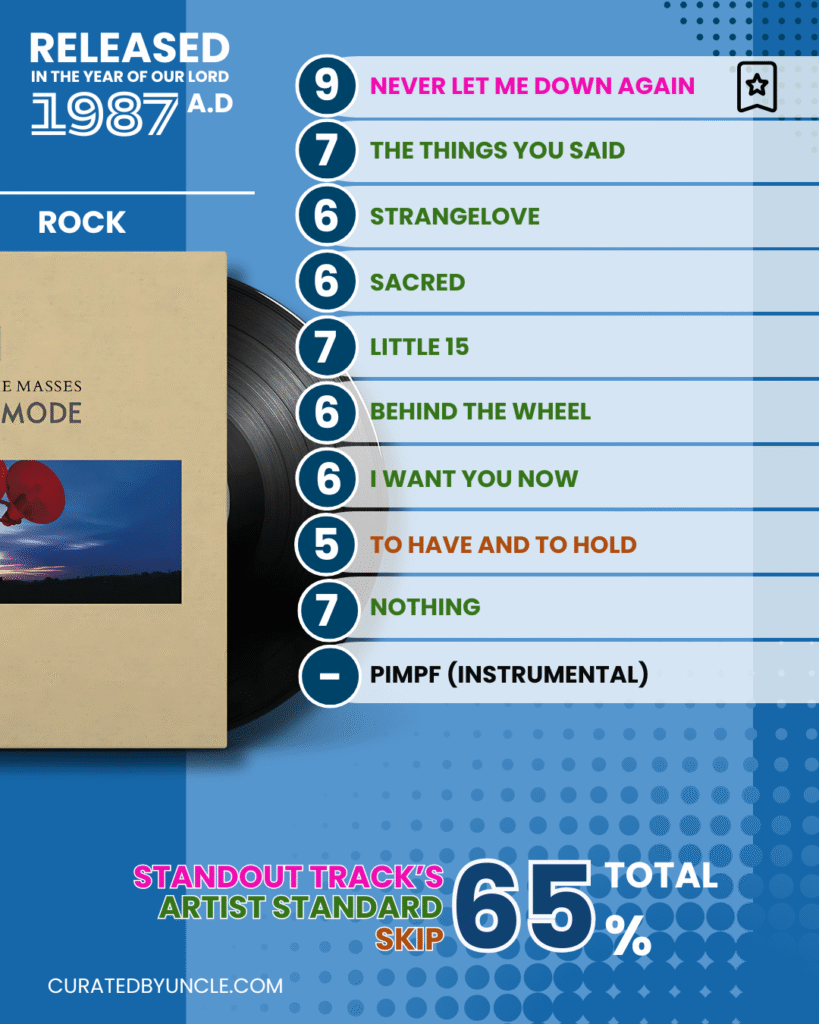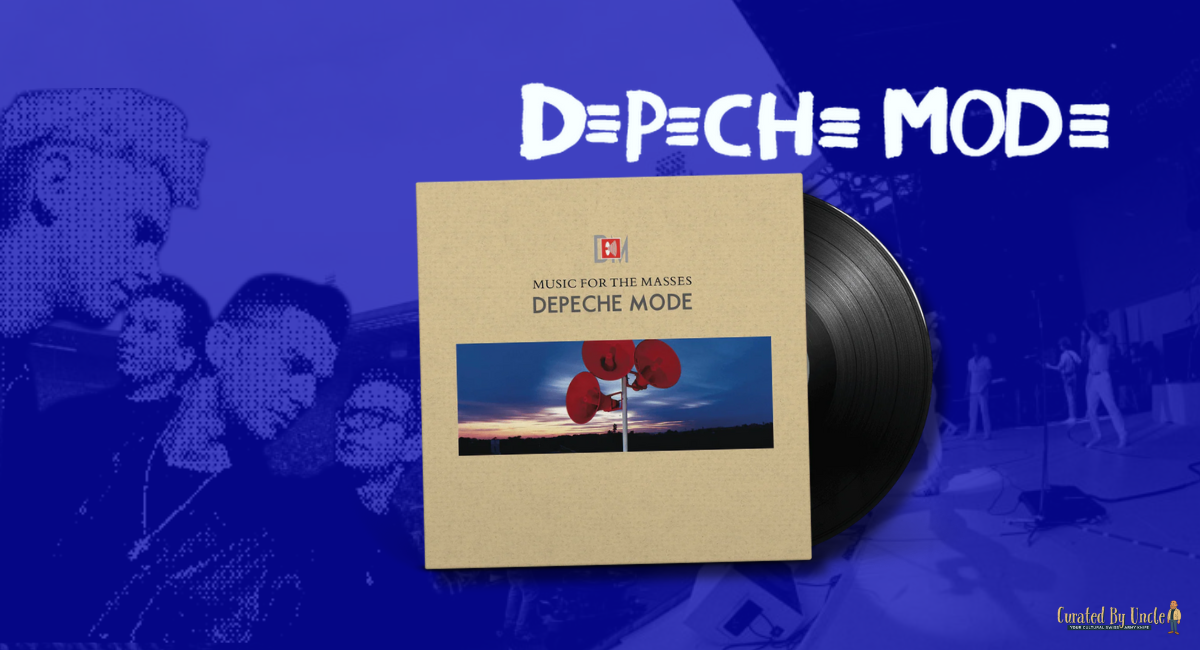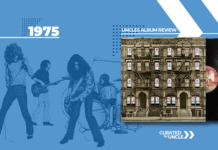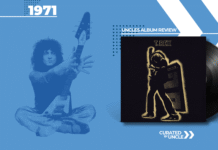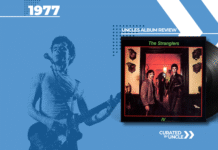Welcome to the Masses (Leave Your Faith at the Door)
Some albums aim to please. Music for the Masses aimed to alienate and somehow got massive doing it. Depeche Mode’s 1987 masterclass in gloom-pop is a gloriously pessimistic paradox: it’s catchy and existential, danceable and desolate. I remember listening to it during a particularly bleak winter commute, wondering if the snowflakes were judging me. They were. But the album was on my side.
Music for the Masses is like a sermon delivered from a nightclub pulpit by a man in eyeliner and emotional debt. And honestly? Amen.
Table of Contents
The Band: Black Suits, Bleak Souls
Let’s take a moment to salute the High Priests of Synth Misery:
- Dave Gahan – The baritone with enough swagger to sell despair like it’s aftershave.
- Martin Gore – The quiet genius with a fetish for sad poetry and bondage.
- Alan Wilder – The actual musician. Synth wizard, arranger, possibly part machine.
- Andy Fletcher – Technically in the band.
By 1987, these boys had already evolved from teen synth-boppers to fully-fledged goth overlords. Music for the Masses was them kicking down the door of global stardom with their boots soaked in melancholy.
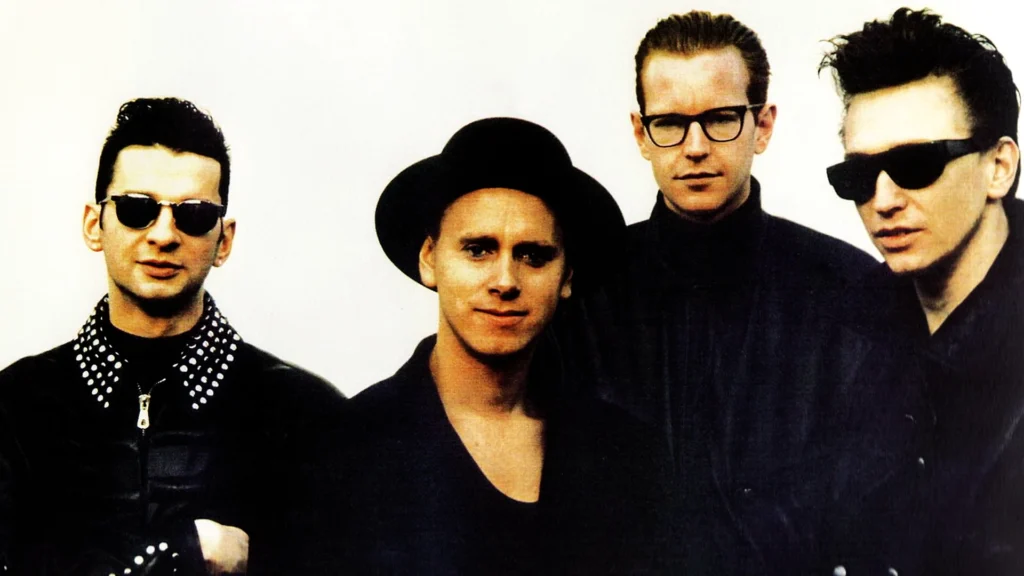
Track-by-Track: Songs for the Willingly Doomed
1. Never Let Me Down Again
The opener to Music for the Masses is a stadium-filling, arm-waving epic disguised as a codependent anthem. With synths that swell like tidal waves and lyrics that read like a romantic hostage note, it’s both euphoric and disturbing. It’s also the best song ever written about going on a possibly metaphorical road trip with your dealer. Or your emotional crutch. Tomato, tomahto.
2. The Things You Said
This is Martin Gore at his most wounded and masochistic. A slow, intimate confessional wrapped in minimal synths and fragile vocals. It’s like reading someone’s diary and realising they cry in binary. Bleak, soft and hauntingly beautiful – this is the track you play when staring into a cup of cold coffee, contemplating the futility of texting back.
3. Strangelove
The kinky pop banger with more mood swings than a Victorian asylum. Gahan sells it like he’s simultaneously seducing and suing you. The lyrics flirt with self-loathing and emotional domination, while the production is a glorious clash of digital whips and analogue roses. No one’s entirely sure what’s going on, but it feels filthy and that’s enough.
4. Sacred
If the Vatican had a synth department, this would be its hymn. “Sacred” is mock-reverent and completely overblown – in the best way. The lyrics are devotion dialled up to the point of absurdity and the backing track sounds like Gregorian monks got their hands on a drum machine. Holy and horny.
5. Little 15
Bleak, brittle and deeply unsettling. It sounds like a lullaby for a child ghost that haunts a Cold War nursery. Gore’s lyrics are ambiguous enough to trigger a dozen theories and the harpsichord-like melody makes it all feel painfully innocent – until it really, really doesn’t. As beautiful as it is disturbing.
6. Behind the Wheel
A pulsating, motorik journey into techno-blues territory. Imagine Kraftwerk getting dumped and turning to whiskey. “Behind the Wheel” is hypnotic, bleakly sexy and absolutely relentless. The lyrics suggest loss of control, but the beat is driving like it’s late for therapy. Perfect for 3 a.m. existential crises and neon-lit motorways.
7. I Want You Now
Martin Gore’s breathy, desperate ode to lustful obsession. There are moans in the background. Literal moans. It’s like someone wrote a love letter during a nervous breakdown in a Berlin sex club. The arrangement is sparse but effective – mostly Gore, a harmonium and the sound of your dignity collapsing.
8. To Have and To Hold
Dark, eerie and skeletal. This track is a minimalist coldwave mantra about possession, addiction, or maybe both. The production feels like it was piped in from a haunted submarine. Gore mumbles about love like it’s a prison sentence. A beautiful kind of decay. This is my least favourite track on Music for the Masses.
9. Nothing
Irony, meet apathy. “Nothing” is a nihilist’s dance track, the kind of tune you boogie to while wondering why you bothered getting out of bed. The beat’s all bounce and sass, but the lyrics are pure bleak. It’s as if Camus wrote a club anthem and dared you to feel something.
10. Pimpf
A terrifying, choral apocalypse to round things off. Just when you thought you might leave the album unscathed, “Pimpf” arrives like a synth-powered funeral dirge. No vocals, just a building tension of military piano strikes and Gregorian howls. It doesn’t end so much as loom. Glorious.
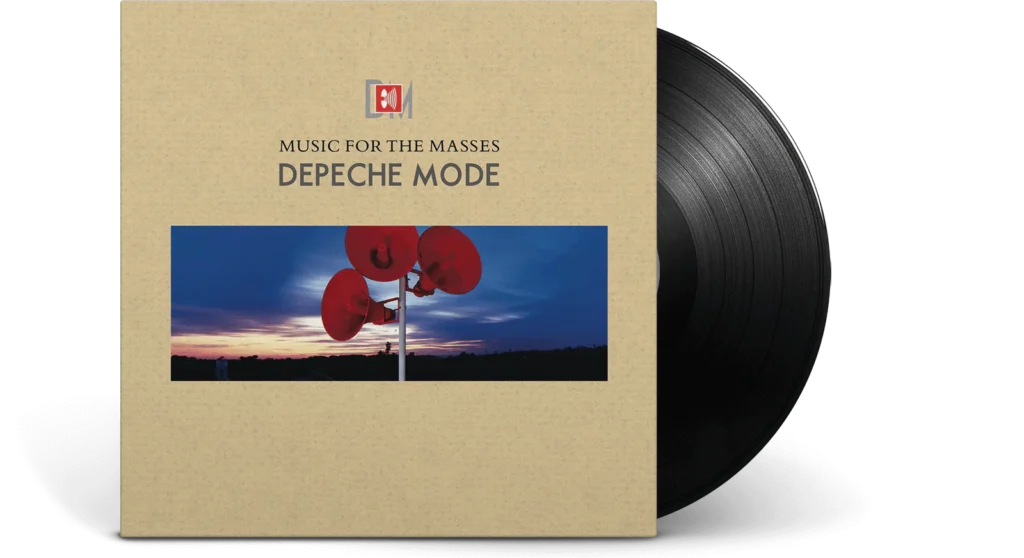
Themes: Faith, Lust and Existential Flatlining
If Music for the Masses had a thesis statement, it would be: “Love is terrible and we’re all doomed, but the beat is amazing.”
The lyrics range from romantic desperation to spiritual fatigue. Faith is mocked, lust is examined like a medical condition and connection feels less like salvation and more like mutual haunting. This is music made by people who read too much Nietzsche and somehow found a groove in it.
Production: Synthesizers from the Depths of Your Soul
Music for the Masses was recorded mostly at Studio Guillaume Tell in Paris and mixed in London’s legendary PUK Studios, the production is cavernous. Alan Wilder took the reins here, layering textures like a sonic sadist. The album is simultaneously sparse and rich, each sound feels necessary, calculated and ominous.
The band were experimenting with sampling, looping and programming in ways that were positively sci-fi at the time. And yet, it never feels cold. Just… existentially chilly.
Legacy: Misery Loves a Stadium
Despite its name, Music for the Masses was intentionally uncommercial. Ironically, it launched Depeche Mode into arena-filling superstardom. The band went from synth weirdos to prophets of postmodern pop.
This album proved that dark, difficult music could connect with a wide audience without dumbing anything down. It paved the way for bands like Nine Inch Nails, Massive Attack and every sad boy who’s ever bought a synth on eBay.
Trivia: Impress Goths at Dinner Parties
- The title was sarcastic – Gore didn’t think they were making mainstream music.
- “Pimpf” is named after a Nazi youth group, but Depeche Mode used it for its eerie sound.
- Alan Wilder hated the cover art, calling it “a mistake.” Fans disagree.
- Dave Gahan once collapsed on stage during the tour for this album – because of course he did.
My Final Thoughts: Leather-Clad Salvation
There are few albums that sound this despondent and yet this seductive. Music for the Masses is a gloomy, glistening cathedral of sound where every echo means something and every lyric might be a cry for help, or a pick-up line.
It’s not quite pop, not quite industrial and definitely not light listening. But it is essential. If you’ve ever worn black eyeliner while frowning at a mirror, this album already lives in your DNA.
I’d rate it 4.7 out of 5 synth-powered sex confessions. It loses a fraction of a point for being almost too emotionally heavy for casual replays but then again, who listens to Depeche Mode casually?

If You Liked Music for the Masses, I Recommend These:
- Pet Shop Boys – Behaviour (1990): Morrissey’s brain with a dance floor attached.
- Nine Inch Nails – Pretty Hate Machine (1989): Angst with volume knobs.
- Gary Numan – Telekon (1980): Robotic paranoia and eyeliner.

